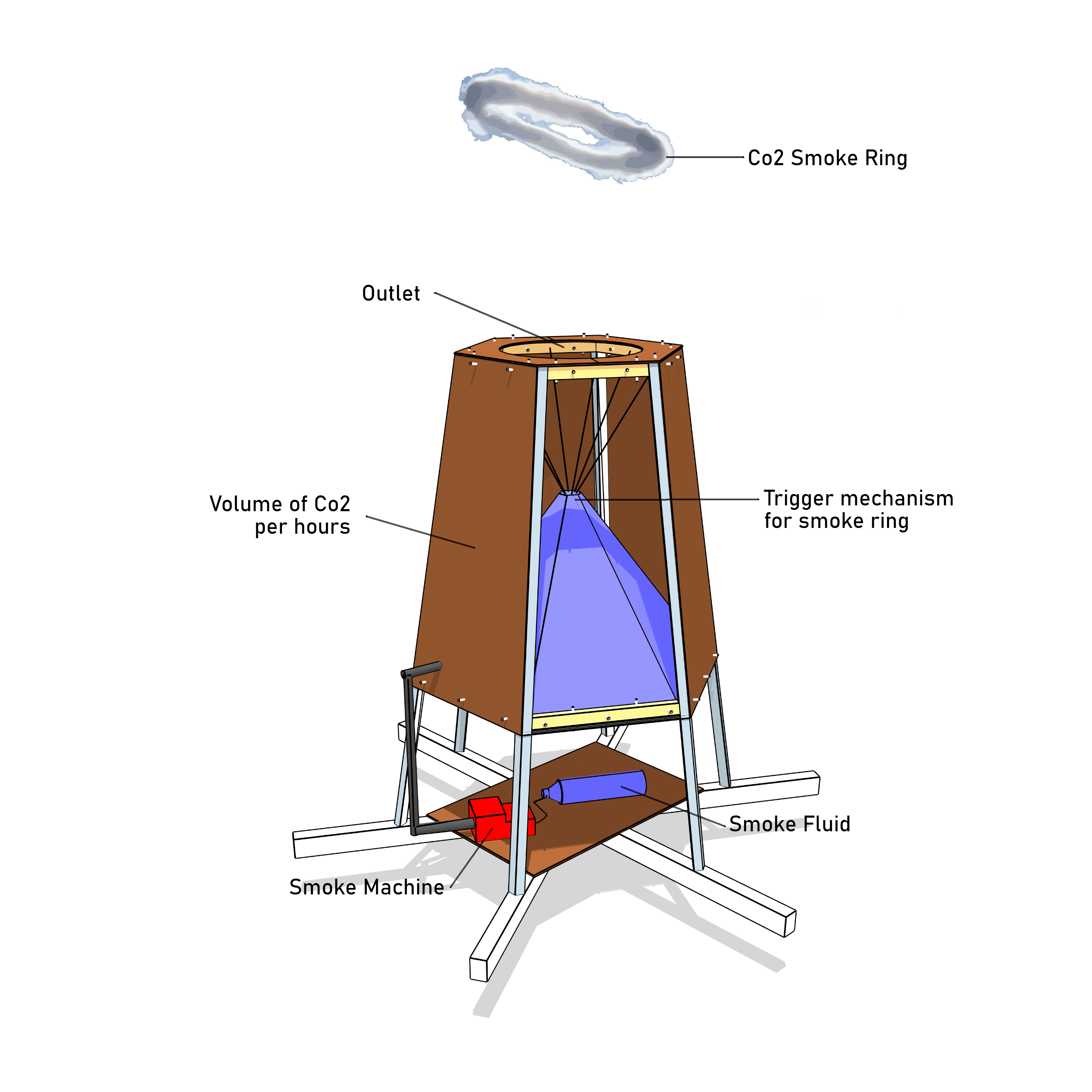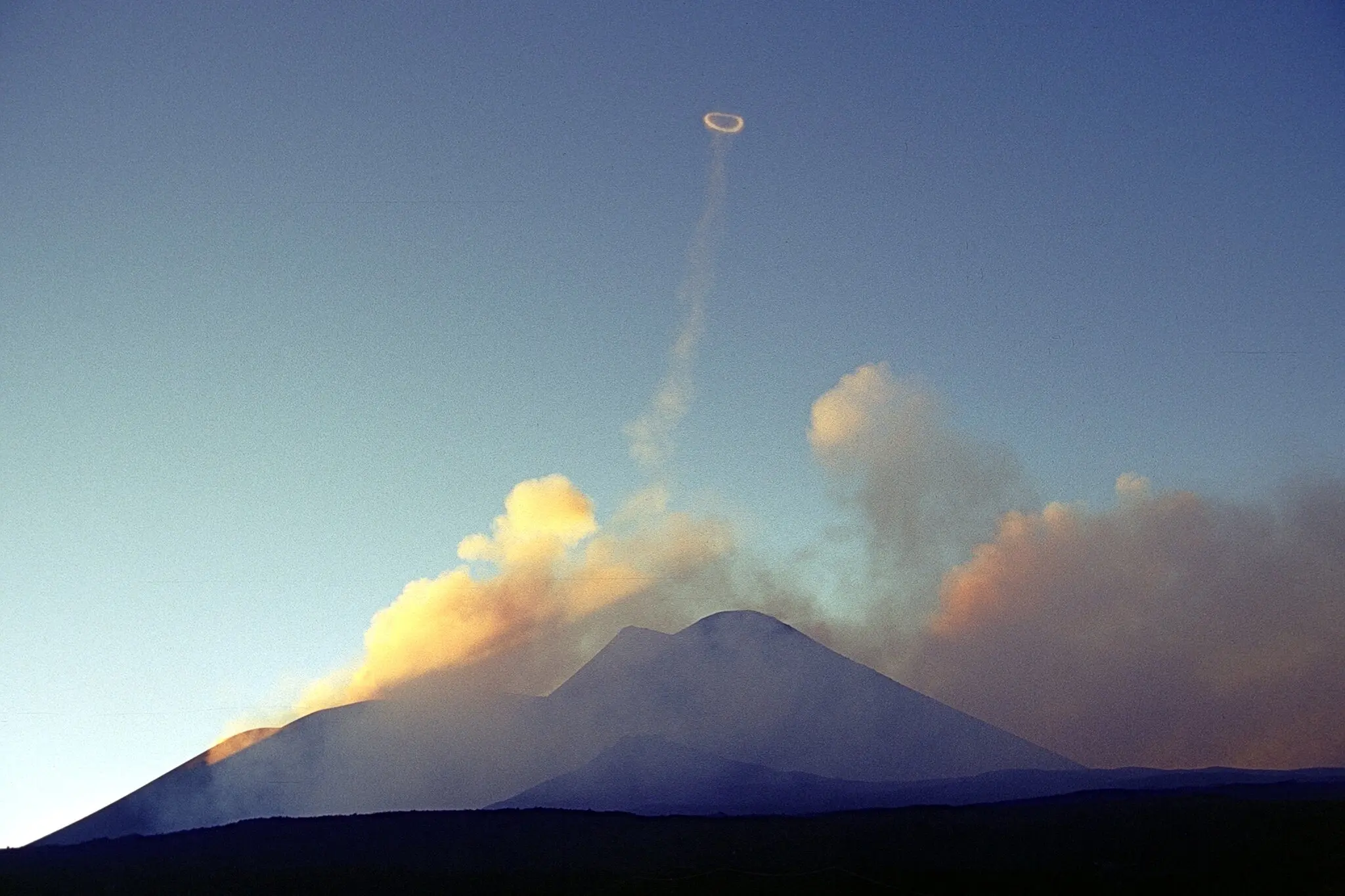Emission of the Cloud
Installation, 2024
The internet allows us to send messages, share pictures, download music, and stream videos at the push of a button, but our online habits have surprising environmental impacts. Behind every photo, every streaming minute, and every search query is a server. To ensure optimal performance, server rooms are air-conditioned and maintained at a cool, constant temperature of 22°C. This process consumes water and electricity—a lot of electricity. In Germany, data centers accumulate nearly six million tons of CO2 emissions annually. Globally, in 2015, digital services were responsible for about two percent of all CO2 emissions, a similar amount to the emissions from all worldwide holiday flights. By 2018, this ratio no longer held. According to a study by the French sustainability think tank Shift Project, global data transfer was already responsible for around four percent of CO2 emissions. If the internet were a country, it would now rank as the sixth largest emitter, with emissions on the rise as the energy demand of information and communication technology continues to grow. According to current calculations by the Borderstep Institute for Sustainability Research, the energy consumption in Germany alone amounts to 12.4 billion kilowatt-hours per year—the equivalent of four medium-sized coal-fired power plants. Although the demand for electricity is declining in Germany according to the Ministry of Economics, we use the internet globally: the servers of Facebook, Google, Amazon, and others are located in the U.S., Norway, or Ireland. Clicks from Germany consume power abroad, but this is invisible to us. Half an hour of streaming on Netflix produces approximately 1.6 kilos of CO2—the same amount as a short car ride. In total, video streaming produces a significant amount of CO2, with over 100 million tons generated by streaming services alone, another 80 million from watching adult content, and around 65 million from platforms like YouTube. Additionally, the training and use of AI applications add to the environmental impact. A conversation of 20 to 50 questions with ChatGPT uses approximately 500 milliliters of water, and even a single Google search generates about 0.2 grams of CO2 per query. “We tend to hoard data and are largely unaware of our resource wastage.” The project aims to draw attention to the environmental footprint of the internet, both ecologically and digitally. Not only are greenhouse gases like CO2 invisible to the human senses, but many people are also unaware that every activity online requires electricity and water in data centers, leading to CO2 emissions.Read more
To highlight this issue, the artwork Emission of the Cloud aims to represent the average mobile data usage of Chemnitz residents—3,280 GB per hour (equivalent to approximately 450 kilograms of CO2)—in the form of a cloud ring. The installation transforms emitted smoke into a symbol of the path our digital consumption’s footprint takes into the atmosphere. Instead of a continuous exhaust stream like chimneys, the device releases a smoke ring every hour. As the ring rises and cools, the water vapor in the gas clouds condenses and gradually dissipates. Emission of the Cloud works with a mechanism that captures CO2 from the environment and directs it into a fog machine. The installation fills its “chamber” with smoke, making the CO2 visible. Once exactly 450 kilograms of CO2 are contained in the chamber, it contracts and releases the gas vertically into the sky. As the gas leaves the chamber, it begins to rotate, a reaction to the friction between air and gas particles. This impressive demonstration of Bernoulli’s principle, lasting a few seconds, stabilizes the smoke ring as it floats in the atmosphere, gradually dissolving. Similar natural phenomena can be observed, such as at Mount Etna, where smoke rings with diameters of up to 200 meters and lifespans of up to 10 minutes have been spotted. The smoke ring serves as a symbol, delivering the simple message that the internet usage of Chemnitz’s residents releases exactly 450 kilograms of CO2, which corresponds to 3,280 GB of data consumption, into the atmosphere every hour. This message, emitted on a clear day by Emission of the Cloud, spreads across the city, symbolizing a chimney for companies like Facebook, Google, Amazon, and others. From the roof of Chemnitz’s town hall, the sequence of rising smoke rings creates a concrete and dignified signal for the emissions of the internet, giving shape and scale to data consumption. In this way, it creates not only a kind of poetic smoke signal but also a tangible index for Chemnitz’s residents to measure their CO2 production. People can see and count the smoke rings! Thus, our sustainability principles are also translated into the virtual realm. Through this installation, the digital ecological footprint is made visible through smoke signals—creating a unique “click awareness.”



















